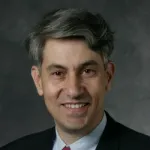
Stanford Report - May 6th, 2009 - by Krista Conger
Medical school researchers received on April 29 a $5.8 million grant from the California Institute for Regenerative Medicine. Michael Longaker, MD, is the principal investigator on the five-year grant, which is focused on ways to stimulate existing adult stem cells to heal damaged nerves, bone, skin and cardiac muscle.
The grant was made as part of the institute's Early Translational Research Awards, which are meant to move promising basic stem cell research from the laboratory into the clinic. It was one of 15 grants totaling $67.7 million that were awarded during a meeting of the institute's 29-member governing board.
"With these Early Translational grants, CIRM has taken the first step in funding translational research that will be critical for the development of future therapies," said CIRM president Alan Trounson in a prepared statement. "These grants are an important part of CIRM's strategy to fund the best basic research and then bring the results of that work to patients."
Longaker, who is the deputy director of Stanford's Stem Cell Biology and Regenerative Medicine Institute, and his colleagues plan to continue their ongoing study of a class of protein molecules called Wnts that mediate the natural response of adult stem cells to injury. The grant received the highest score of the 15 applications approved for funding, and reviewers were noted to be "uniformly enthusiastic" about the proposal.
"This approach takes advantage of the solution that nature itself developed for repairing damaged or diseased tissues," Longaker wrote in the grant application, noting that it also bypasses immunological and ethical hurdles to using transplanted stem cells in human therapy because it would involve stimulating a patient's own stem cells. "When utilizing this strategy, the goal of reaching clinical trials in human patients within five years becomes realistic," he added.
The April 29 grants from CIRM were a vote of confidence buoyed by California's recent success in selling public bonds. Board members had been hesitant in the previous two meetings to commit funds to new projects. However, the state sold $6.5 billion in public bonds last month and allocated $275 million to the institute. According to a press release from the institute, additional bond funds earmarked for CIRM were used to repay a prior state loan.
With this grant, CIRM has approved a total of $107 million in grants to Stanford.

